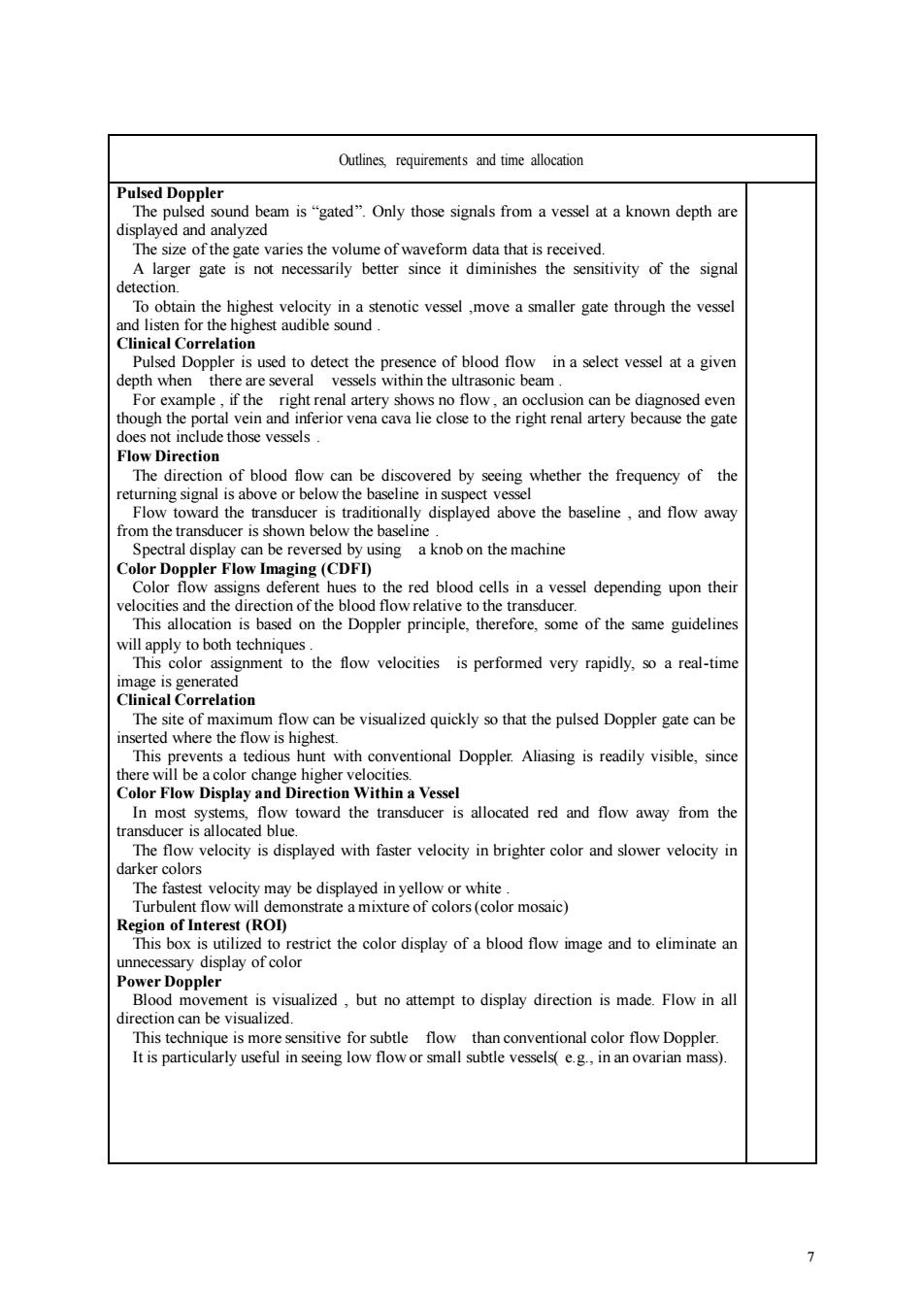正在加载图片...

Outlinesrequrements and time aries the yolume of waveform data that is received A larger gate is not necessarily better since it diminishes the sensitivity of the signa detection ation vessel at a giver Flow Direction The f whether the of the om the transducer be reversed by using a knob on the machine a你 the es to the red blood cells in a vessel depending upon their will apply to both techniques very rapillyra-tim The site of maximum flow can be visualized quickly so that the pulsed Doppler gate can be This preventsa tdiou hunt with oventional Doppler Aliasing is readily visible since The fastest velocity may be displayed in yellow or white onstrate a mixture of colors(color mosaic) This box is utilized to restrict the color display of a blood flow image and to eliminate an temt to i direction s ectioncan be visualized.7 Outlines, requirements and time allocation Pulsed Doppler The pulsed sound beam is “gated”. Only those signals from a vessel at a known depth are displayed and analyzed The size of the gate varies the volume of waveform data that is received. A larger gate is not necessarily better since it diminishes the sensitivity of the signal detection. To obtain the highest velocity in a stenotic vessel ,move a smaller gate through the vessel and listen for the highest audible sound . Clinical Correlation Pulsed Doppler is used to detect the presence of blood flow in a select vessel at a given depth when there are several vessels within the ultrasonic beam . For example , if the right renal artery shows no flow , an occlusion can be diagnosed even though the portal vein and inferior vena cava lie close to the right renal artery because the gate does not include those vessels . Flow Direction The direction of blood flow can be discovered by seeing whether the frequency of the returning signal is above or below the baseline in suspect vessel Flow toward the transducer is traditionally displayed above the baseline , and flow away from the transducer is shown below the baseline . Spectral display can be reversed by using a knob on the machine Color Doppler Flow Imaging (CDFI) Color flow assigns deferent hues to the red blood cells in a vessel depending upon their velocities and the direction of the blood flow relative to the transducer. This allocation is based on the Doppler principle, therefore, some of the same guidelines will apply to both techniques . This color assignment to the flow velocities is performed very rapidly, so a real-time image is generated Clinical Correlation The site of maximum flow can be visualized quickly so that the pulsed Doppler gate can be inserted where the flow is highest. This prevents a tedious hunt with conventional Doppler. Aliasing is readily visible, since there will be a color change higher velocities. Color Flow Display and Direction Within a Vessel In most systems, flow toward the transducer is allocated red and flow away from the transducer is allocated blue. The flow velocity is displayed with faster velocity in brighter color and slower velocity in darker colors The fastest velocity may be displayed in yellow or white . Turbulent flow will demonstrate a mixture of colors (color mosaic) Region of Interest (ROI) This box is utilized to restrict the color display of a blood flow image and to eliminate an unnecessary display of color Power Doppler Blood movement is visualized , but no attempt to display direction is made. Flow in all direction can be visualized. This technique is more sensitive for subtle flow than conventional color flow Doppler. It is particularly useful in seeing low flow or small subtle vessels( e.g., in an ovarian mass)